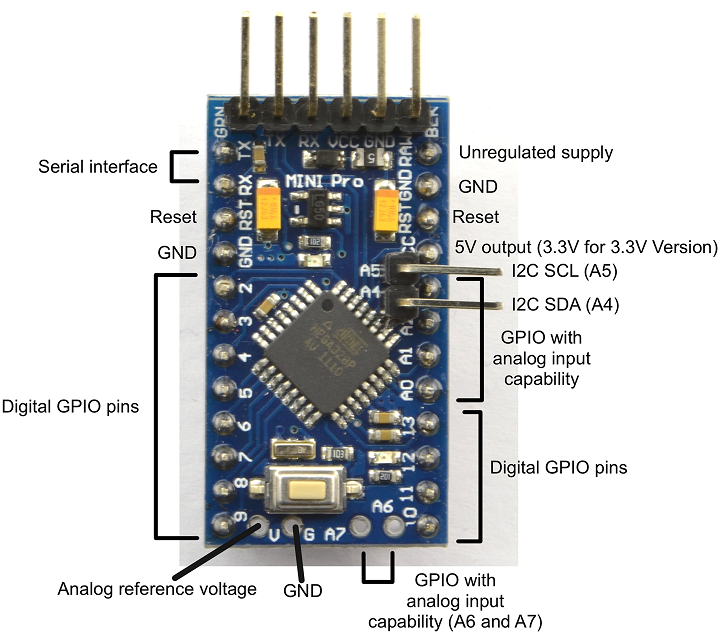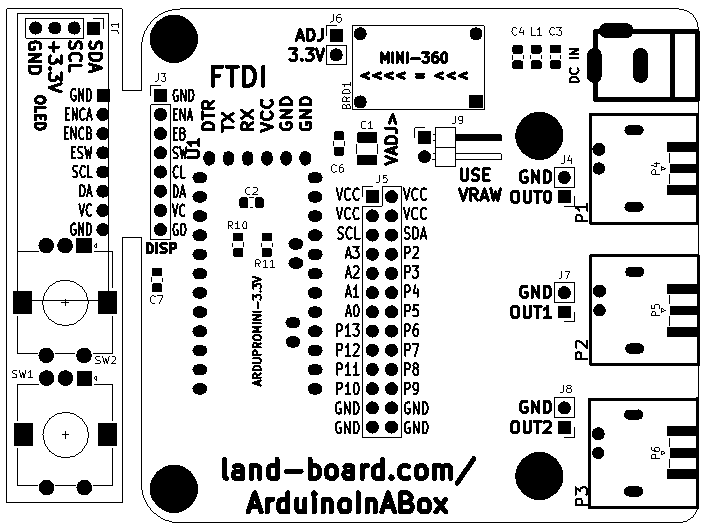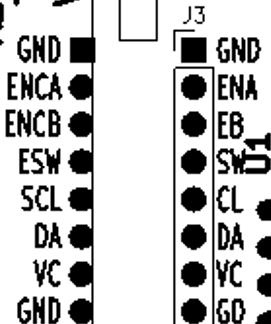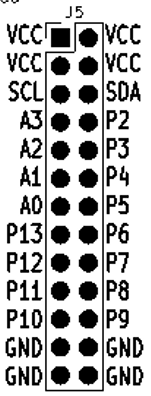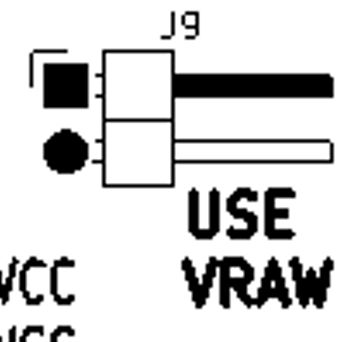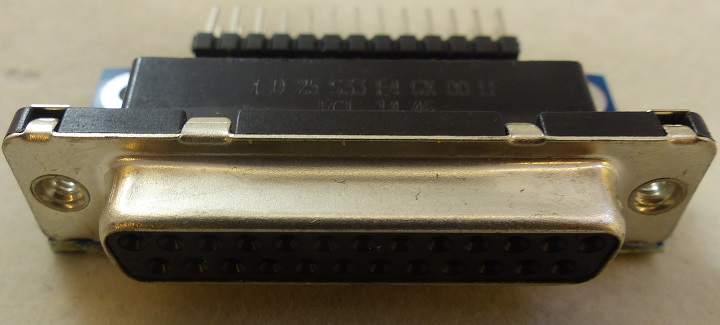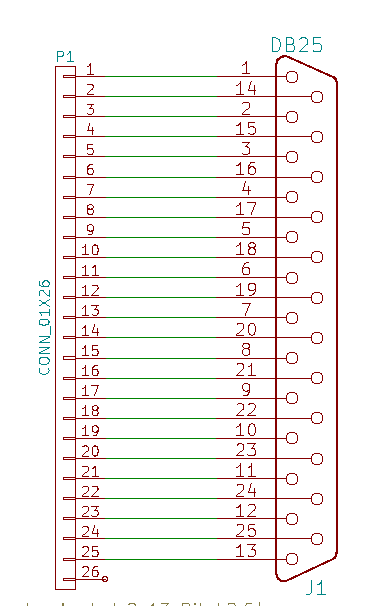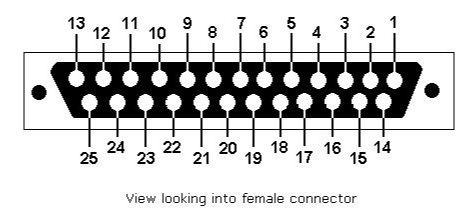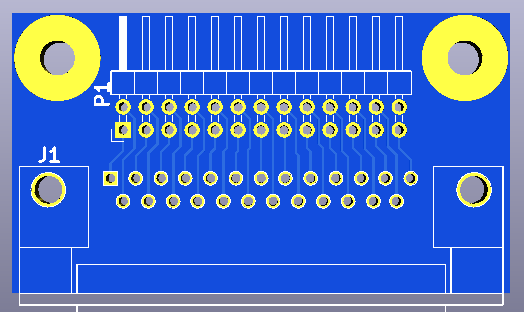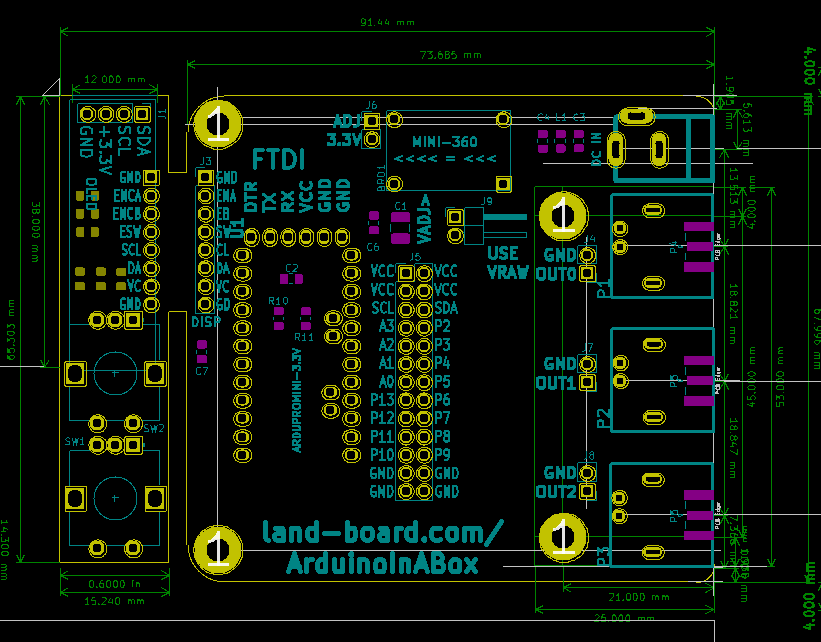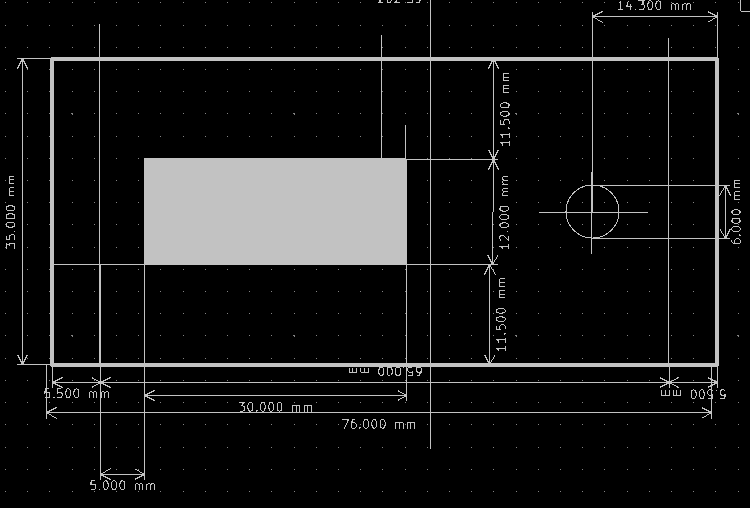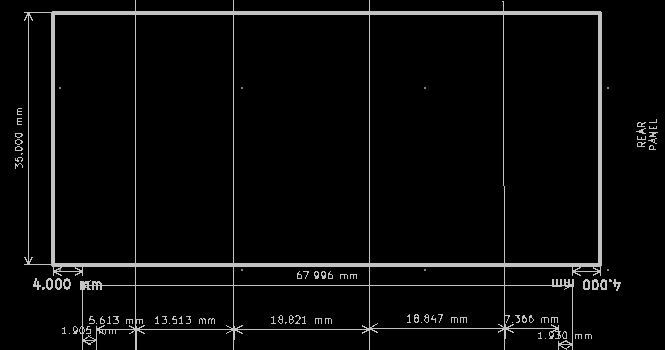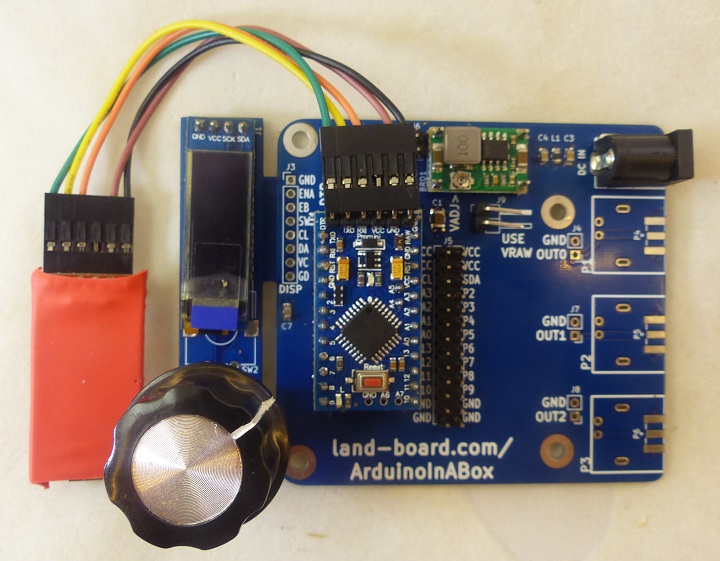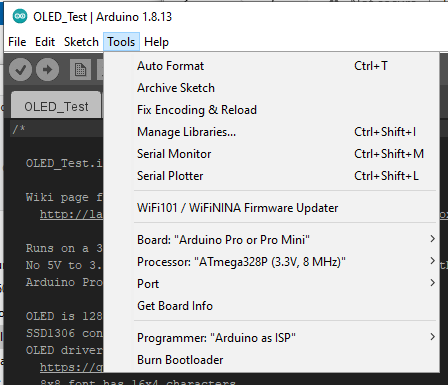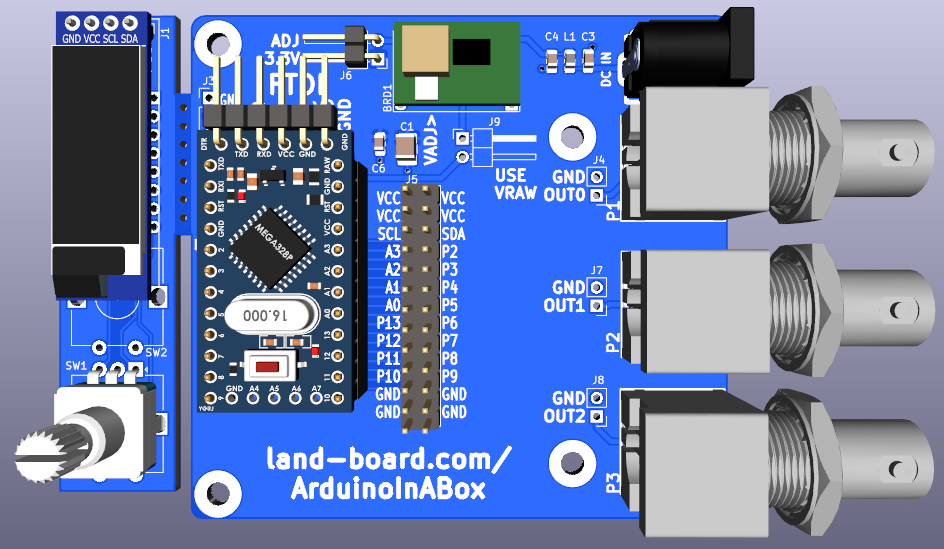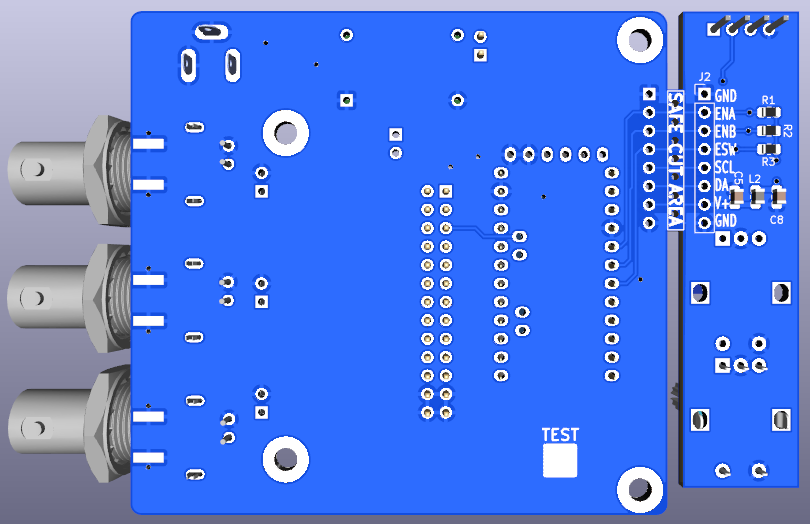Difference between revisions of "ArduinoInABox"
Jump to navigation
Jump to search
Blwikiadmin (talk | contribs) |
Blwikiadmin (talk | contribs) |
||
| (73 intermediate revisions by the same user not shown) | |||
| Line 1: | Line 1: | ||
| − | [[file:ArduinoInABox. | + | [[File:tindie-mediums.png|link=https://www.tindie.com/products/26877/]] |
| + | |||
| + | <video type="youtube">qjMhJRPKGPQ</video> | ||
| + | |||
| + | [[file:ArduinoInABox-P18170_720px.jpg]] | ||
== Features == | == Features == | ||
| Line 8: | Line 12: | ||
** On-board DC/DC buck regulator allows 7-23V input | ** On-board DC/DC buck regulator allows 7-23V input | ||
** Direct 7-9V input (USE VRAW jumper) | ** Direct 7-9V input (USE VRAW jumper) | ||
| − | ** 3.3V | + | ** 3.3V or 5V Arduino support |
| + | ** Measured 12 mA with 9V input and 3.3V Arduino Pro Mini | ||
* I/O Boards | * I/O Boards | ||
** DB-25 | ** DB-25 | ||
| Line 16: | Line 21: | ||
* Inexpensive and widely available | * Inexpensive and widely available | ||
| − | * [https://www.arduino.cc/en/uploads/Main/Arduino-Pro-Mini-schematic.pdf Arduino Pro Mini | + | * [https://www.arduino.cc/en/uploads/Main/Arduino-Pro-Mini-schematic.pdf Arduino Pro Mini Schematic] |
* I/O - 14 digital input/output pins (of which 6 can be used as PWM outputs) | * I/O - 14 digital input/output pins (of which 6 can be used as PWM outputs) | ||
** Serial: 0 (RX) and 1 (TX). | ** Serial: 0 (RX) and 1 (TX). | ||
| Line 50: | Line 55: | ||
* Can leave attached to main board until installing in box | * Can leave attached to main board until installing in box | ||
| − | === Input | + | === Input Power Options === |
| − | |||
| − | |||
| − | |||
* 2.1mm DC Power Connector Jack | * 2.1mm DC Power Connector Jack | ||
| − | * | + | * [[Mini360_Buck_Converter|Mini360]] Switching Mode Power Supply |
| − | * | + | ** Wide input voltage range |
| − | * | + | *** 5-23V (for 3.3V Arduino Pro Mini) |
| − | ** About $1 | + | *** 7-23V (for 5V Arduino Pro Mini) |
| + | *** About $1 | ||
* Jumper to use raw input and not populate the Mini360 | * Jumper to use raw input and not populate the Mini360 | ||
** Uses the inputs jack as RAW power into the Arduino Pro Mini | ** Uses the inputs jack as RAW power into the Arduino Pro Mini | ||
** 3.35-12 V (3.3V model) or 5-12 V (5V model) | ** 3.35-12 V (3.3V model) or 5-12 V (5V model) | ||
| − | === | + | ==== RF Filters ==== |
| + | |||
| + | * RF filter into Switching regulator board | ||
| + | * 2nd RF filter into HID card | ||
| + | |||
| + | == Connectors == | ||
| + | |||
| + | [[file:ArduinoInABox_CAD_X1.png]] | ||
| − | + | === J1 - OLED === | |
| − | |||
| − | |||
| − | |||
| − | |||
| − | |||
| − | |||
| − | |||
| − | + | * Pinout | |
| − | + | # SDA | |
| + | # SCL | ||
| + | # +VCC | ||
| + | # GND | ||
| − | + | === J2, J4 - On Base and HID card(s) === | |
[[file:ARB_J2.PNG]] | [[file:ARB_J2.PNG]] | ||
| − | + | * Can detach HID to mount in box | |
| + | * Pinout | ||
| + | |||
| + | # GND | ||
| + | # ENCODER A | ||
| + | # ENCODER B | ||
| + | # ENCODER SWITCH | ||
| + | # I2C_SCL | ||
| + | # I2C_SDA | ||
| + | # VCC | ||
| + | # GND | ||
| − | + | === J4, J7, J8 - BNC/SMA input headers === | |
| − | + | * Connect here to use the BNC or SMA jacks on the rear (option) | |
| − | + | === J5 - Arduino Pins === | |
| − | + | * 2x13 header | |
[[file:ARB_J5.PNG]] | [[file:ARB_J5.PNG]] | ||
| − | ===== J9 - Use Raw Power | + | === J6 - Voltage Adjustment === |
| + | |||
| + | * Adjust voltage for 3.3V or 5V to match Pro Mini voltage before installing jumper | ||
| + | |||
| + | === J9 - Use Raw Power === | ||
[[file:AIB_J9.PNG]] | [[file:AIB_J9.PNG]] | ||
| − | ==== | + | # DC_FILT (top pin) |
| + | # VRAW (bottom pin) | ||
| + | |||
| + | === FTDI (on Arduino Pro Mini) === | ||
| + | |||
| + | * Used to download program to Arduino Pro Mini | ||
| + | |||
| + | == Human Interface (HID) == | ||
| + | |||
| + | * OLED | ||
| + | * Rotary Switch with Pushbutton | ||
| + | * Detachable board | ||
| + | ** Can be mounted to Front Panel of enclosure | ||
| + | |||
| + | [[file:HID_Connect.PNG]] | ||
| + | |||
| + | === OLED === | ||
| + | |||
| + | * 0.91" 128x32 or so rotary switch (installed in SW1 location) is to the right | ||
| + | * 0.96" 128x64 (rotated) with rotary switch (installed in SW1 location) below | ||
| + | * SSD1306 family of displays | ||
| + | * Connections to Arduino Pins | ||
| + | ** A4/SDA | ||
| + | ** A5/SCL | ||
| − | * [[DB25-02]] | + | === Rotary Encoder === |
| + | |||
| + | * Connections to Arduino Pins | ||
| + | ** A=P2 | ||
| + | ** B=P3 | ||
| + | ** Switch=P4 | ||
| + | |||
| + | == I/O Boards == | ||
| + | |||
| + | * Base board has 3 optional BNC (P1-P3) or edge launch SMA (P4-P6) connectors | ||
| + | ** Brought to headers (J4, J7, J8) | ||
| + | * Easy to application specific custom I/O cards | ||
| + | ** All Arduino pins brought to J5 - 2x13 pin header | ||
| + | ** I/O pins are on 0.1" grid for easier prototyping | ||
| + | ** P2-P13, A0-A3 | ||
| + | ** A4/A5 or SDA/SCL (connects to OLED) | ||
| + | * Location of mounting holes | ||
| + | |||
| + | [[file:DB-25_Mechs_DBdMtg.png]] | ||
| + | |||
| + | === DB-25 Example === | ||
| + | |||
| + | ** [[DB25-02|DB25 pass-through]] | ||
* Standard DB-25 female | * Standard DB-25 female | ||
| − | ** | + | ** Does not have 26 pin of the 2x13 header in the box |
| − | ** OK, extra powers/grounds at the ends | + | *** OK, extra powers/grounds at the ends |
** Connect with 1:1 cables to 2x10/2x3 Dupont receptacles | ** Connect with 1:1 cables to 2x10/2x3 Dupont receptacles | ||
| Line 120: | Line 185: | ||
* Board is designed to fit into Aluminum Project Box Enclosure DIY 100*76*35mm - [https://www.ebay.com/sch/i.html?_from=R40&_trksid=p2334524.m570.l1313&_nkw=100*76*35mm+aluminum&_sacat=0&LH_TitleDesc=0&_odkw=100*76*35mm+Aluminum+PCB+Instrument+Box+Enclosure+Electronic+Project+Case+Set&_id=174408274566 ebay search] | * Board is designed to fit into Aluminum Project Box Enclosure DIY 100*76*35mm - [https://www.ebay.com/sch/i.html?_from=R40&_trksid=p2334524.m570.l1313&_nkw=100*76*35mm+aluminum&_sacat=0&LH_TitleDesc=0&_odkw=100*76*35mm+Aluminum+PCB+Instrument+Box+Enclosure+Electronic+Project+Case+Set&_id=174408274566 ebay search] | ||
| − | |||
| − | |||
| − | |||
| − | |||
[[file:ArduinoInABox_Mechs.png]] | [[file:ArduinoInABox_Mechs.png]] | ||
| Line 131: | Line 192: | ||
[[file:VFO-003_RearPanel_Holes.PNG]] | [[file:VFO-003_RearPanel_Holes.PNG]] | ||
| − | == | + | == Schematic == |
| − | |||
| − | |||
| − | |||
| − | + | * [http://land-boards.com/ArduinoInABox/ARDUINO_IN_A_BOX_REV1_Schematic.pdf ArduinoInABox Rev 2 Schematic] | |
| − | + | == Test == | |
| − | |||
| − | |||
| − | |||
| − | |||
| − | |||
| − | |||
| + | * Test code - [https://github.com/land-boards/lb-Arduino-Code/tree/master/LBCards/ArduinoInABox/OLED_Test OLED/Rotary Switch Test] | ||
| + | * If there is no display on OLED, verify OLED appears at expected I2C address with [https://github.com/land-boards/lb-Arduino-Code/tree/master/LBCards/ArduinoInABox/I2C_Scan I2C scan] at I2C address 0x3C | ||
| + | ** Expect results | ||
<pre> | <pre> | ||
| − | + | Scanning... | |
| + | I2C device found at address 0x3C ! | ||
| + | done | ||
</pre> | </pre> | ||
| − | + | * May require a different constructor | |
| − | + | ** I used | |
| − | |||
| − | * | ||
| − | |||
<pre> | <pre> | ||
| − | + | U8X8_SSD1306_128X32_UNIVISION_HW_I2C u8x8(U8X8_PIN_NONE); | |
| + | </pre> | ||
| + | ** Your mileage may vary | ||
| − | + | == Software == | |
| − | === | + | === GitHub Repository === |
| − | * [https://github.com/land-boards/lb-Arduino-Code/tree/master/LBCards/ | + | * [https://github.com/land-boards/lb-Arduino-Code/tree/master/LBCards/ArduinoInABox GitHub Repository] |
| − | * [https://github.com/ | + | * [https://github.com/land-boards/lb-Arduino-Code/tree/master/LBCards/ArduinoInABox/OLED_Test OLED/Rotary Switch Test] - Good starting point |
| + | ** Uses [https://www.best-microcontroller-projects.com/rotary-encoder.html Rotary Encoder Tutorial] - best code is at the ends under "Code For Improved Table Decode" | ||
| + | * [https://github.com/land-boards/lb-Arduino-Code/tree/master/LBCards/ArduinoInABox/BounceLEDs BounceLEDs] - Bounce an LED across pins D5-D13 and A0-A3 | ||
| + | ** A0 = D14 | ||
| + | ** A1 = D15 | ||
| + | ** A2 = D16 | ||
| + | ** A3 = D17 | ||
| + | * [https://github.com/land-boards/lb-Arduino-Code/tree/master/LBCards/ArduinoInABox/AiBMenu Menu Demo Code] - Select between menu options | ||
| − | < | + | <video type="youtube">qjMhJRPKGPQ</video> |
| − | |||
| − | </ | ||
| − | + | === Total Memory usage with u8x8 Library and Rotary Encoder Code === | |
| + | * [https://github.com/land-boards/lb-Arduino-Code/tree/master/LBCards/ArduinoInABox/OLED_Test OLED/Rotary Switch Test] | ||
| + | * Arduino bootloader uses up 2048 bytes of Flash | ||
<pre> | <pre> | ||
| − | + | Sketch uses 7062 bytes (22%) of program storage space. | |
| − | + | Maximum is 30720 bytes. | |
| − | + | Global variables use 475 bytes (23%) of dynamic memory, | |
| + | leaving 1573 bytes for local variables. Maximum is 2048 bytes. | ||
| − | |||
| − | |||
| − | |||
| − | |||
| − | |||
| − | |||
| − | |||
| − | |||
| − | |||
| − | |||
| − | |||
| − | |||
| − | |||
| − | |||
| − | |||
| − | |||
| − | |||
| − | |||
| − | |||
| − | |||
| − | |||
| − | |||
| − | |||
| − | |||
| − | |||
| − | |||
| − | |||
</pre> | </pre> | ||
| Line 213: | Line 250: | ||
</pre> | </pre> | ||
| − | * | + | === Download/Programming === |
| + | |||
| + | * FTDI cable | ||
| + | ** FTDI jumper is set to 3.3V | ||
| + | ** Power wire is not used | ||
| + | ** Other connections are 1:1 | ||
| − | + | [[File:ArduinoInABox-P18162-720px.jpg]] | |
| − | |||
| − | + | ==== IDE setup ==== | |
| − | |||
| − | |||
| − | + | * Board: Arduino Pro or Pro Mini | |
| + | * Processor: ATMega328P (3.3V, 8 MHz) | ||
| − | + | [[file:ProgrammingArduinoInABox.png]] | |
| − | + | == 3D == | |
| − | |||
| − | |||
| − | |||
| − | + | [[file:ArduinoInABox_FRONT_Rev2_3D.png]] | |
| − | |||
| − | |||
| − | |||
| − | |||
| − | + | [[file:ArduinoInABox_REAR_Rev2_3D.png]] | |
| − | |||
== Assembly Instructions == | == Assembly Instructions == | ||
* [[ArduinoInABox Assembly Instructions Rev 1]] | * [[ArduinoInABox Assembly Instructions Rev 1]] | ||
Latest revision as of 16:00, 3 August 2022
Contents
Features
- Arduino Pro Mini
- Detachable Human Interface design (HID)
- Flexible Input power
- On-board DC/DC buck regulator allows 7-23V input
- Direct 7-9V input (USE VRAW jumper)
- 3.3V or 5V Arduino support
- Measured 12 mA with 9V input and 3.3V Arduino Pro Mini
- I/O Boards
- DB-25
- Mounts in a standard extruded Aluminum enclosure
Arduino Pro Mini
- Inexpensive and widely available
- Arduino Pro Mini Schematic
- I/O - 14 digital input/output pins (of which 6 can be used as PWM outputs)
- Serial: 0 (RX) and 1 (TX).
- Used to receive (RX) and transmit (TX) TTL serial data.
- These pins are connected to the TX-0 and RX-1 pins of the six pin header.
- External Interrupts: 2 and 3.
- These pins can be configured to trigger an interrupt on a low value, a rising or falling edge, or a change in value.
- See the attachInterrupt function for details.
- PWM: 3, 5, 6, 9, 10, and 11.
- Provide 8-bit PWM output with the analogWrite function.
- SPI: 10 (SS), 11 (MOSI), 12 (MISO), 13 (SCK).
- These pins support SPI communication, which, although provided by the underlying hardware.
- LED: 13.
- There is a built-in LED connected to digital pin 13.
- When the pin is HIGH value, the LED is on, when the pin is LOW, it's off.
- 6 analog inputs
- Serial: 0 (RX) and 1 (TX).
- On-board resonator (8 or 16 MHz)
- Reset button
- A six pin header can be connected to an FTDI cable provide USB power and communication to the board
- 3.3 or 5V
- 8 MHz (3.3V) or 16 MHz (5V)
- Programmable in Arduino IDE
Detachable Human Interface design (HID)
- OLED
- 128x32 or 128x64
- u8x8 driver - 6.2KB overhead
- Rotary Encoder with switch
- Can leave attached to main board until installing in box
Input Power Options
- 2.1mm DC Power Connector Jack
- Mini360 Switching Mode Power Supply
- Wide input voltage range
- 5-23V (for 3.3V Arduino Pro Mini)
- 7-23V (for 5V Arduino Pro Mini)
- About $1
- Wide input voltage range
- Jumper to use raw input and not populate the Mini360
- Uses the inputs jack as RAW power into the Arduino Pro Mini
- 3.35-12 V (3.3V model) or 5-12 V (5V model)
RF Filters
- RF filter into Switching regulator board
- 2nd RF filter into HID card
Connectors
J1 - OLED
- Pinout
- SDA
- SCL
- +VCC
- GND
J2, J4 - On Base and HID card(s)
- Can detach HID to mount in box
- Pinout
- GND
- ENCODER A
- ENCODER B
- ENCODER SWITCH
- I2C_SCL
- I2C_SDA
- VCC
- GND
J4, J7, J8 - BNC/SMA input headers
- Connect here to use the BNC or SMA jacks on the rear (option)
J5 - Arduino Pins
- 2x13 header
J6 - Voltage Adjustment
- Adjust voltage for 3.3V or 5V to match Pro Mini voltage before installing jumper
J9 - Use Raw Power
- DC_FILT (top pin)
- VRAW (bottom pin)
FTDI (on Arduino Pro Mini)
- Used to download program to Arduino Pro Mini
Human Interface (HID)
- OLED
- Rotary Switch with Pushbutton
- Detachable board
- Can be mounted to Front Panel of enclosure
OLED
- 0.91" 128x32 or so rotary switch (installed in SW1 location) is to the right
- 0.96" 128x64 (rotated) with rotary switch (installed in SW1 location) below
- SSD1306 family of displays
- Connections to Arduino Pins
- A4/SDA
- A5/SCL
Rotary Encoder
- Connections to Arduino Pins
- A=P2
- B=P3
- Switch=P4
I/O Boards
- Base board has 3 optional BNC (P1-P3) or edge launch SMA (P4-P6) connectors
- Brought to headers (J4, J7, J8)
- Easy to application specific custom I/O cards
- All Arduino pins brought to J5 - 2x13 pin header
- I/O pins are on 0.1" grid for easier prototyping
- P2-P13, A0-A3
- A4/A5 or SDA/SCL (connects to OLED)
- Location of mounting holes
DB-25 Example
- Standard DB-25 female
- Does not have 26 pin of the 2x13 header in the box
- OK, extra powers/grounds at the ends
- Connect with 1:1 cables to 2x10/2x3 Dupont receptacles
- Does not have 26 pin of the 2x13 header in the box
Mechanicals/Enclosure
- Board is designed to fit into Aluminum Project Box Enclosure DIY 100*76*35mm - ebay search
Schematic
Test
- Test code - OLED/Rotary Switch Test
- If there is no display on OLED, verify OLED appears at expected I2C address with I2C scan at I2C address 0x3C
- Expect results
Scanning... I2C device found at address 0x3C ! done
- May require a different constructor
- I used
U8X8_SSD1306_128X32_UNIVISION_HW_I2C u8x8(U8X8_PIN_NONE);
- Your mileage may vary
Software
GitHub Repository
- GitHub Repository
- OLED/Rotary Switch Test - Good starting point
- Uses Rotary Encoder Tutorial - best code is at the ends under "Code For Improved Table Decode"
- BounceLEDs - Bounce an LED across pins D5-D13 and A0-A3
- A0 = D14
- A1 = D15
- A2 = D16
- A3 = D17
- Menu Demo Code - Select between menu options
Total Memory usage with u8x8 Library and Rotary Encoder Code
- OLED/Rotary Switch Test
- Arduino bootloader uses up 2048 bytes of Flash
Sketch uses 7062 bytes (22%) of program storage space. Maximum is 30720 bytes. Global variables use 475 bytes (23%) of dynamic memory, leaving 1573 bytes for local variables. Maximum is 2048 bytes.
Minimal u8x8 code
Sketch uses 6198 bytes (20%) of program storage space. Maximum is 30720 bytes. Global variables use 446 bytes (21%) of dynamic memory, leaving 1602 bytes for local variables. Maximum is 2048 bytes.
Download/Programming
- FTDI cable
- FTDI jumper is set to 3.3V
- Power wire is not used
- Other connections are 1:1
IDE setup
- Board: Arduino Pro or Pro Mini
- Processor: ATMega328P (3.3V, 8 MHz)


